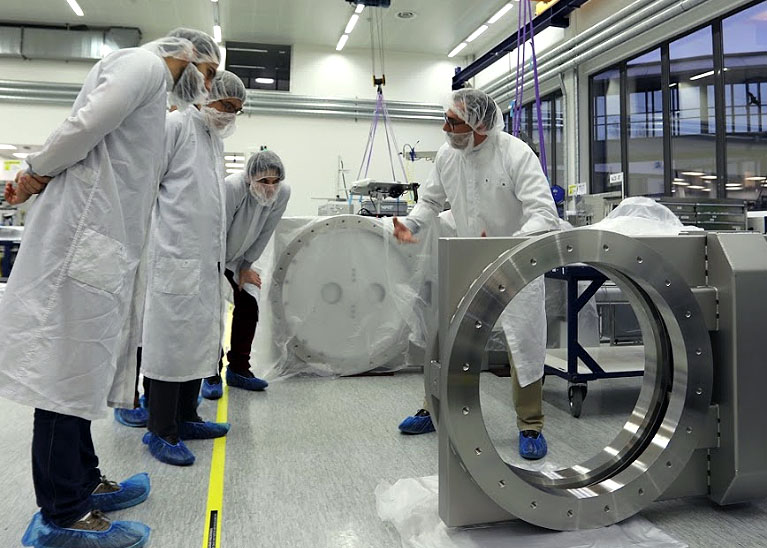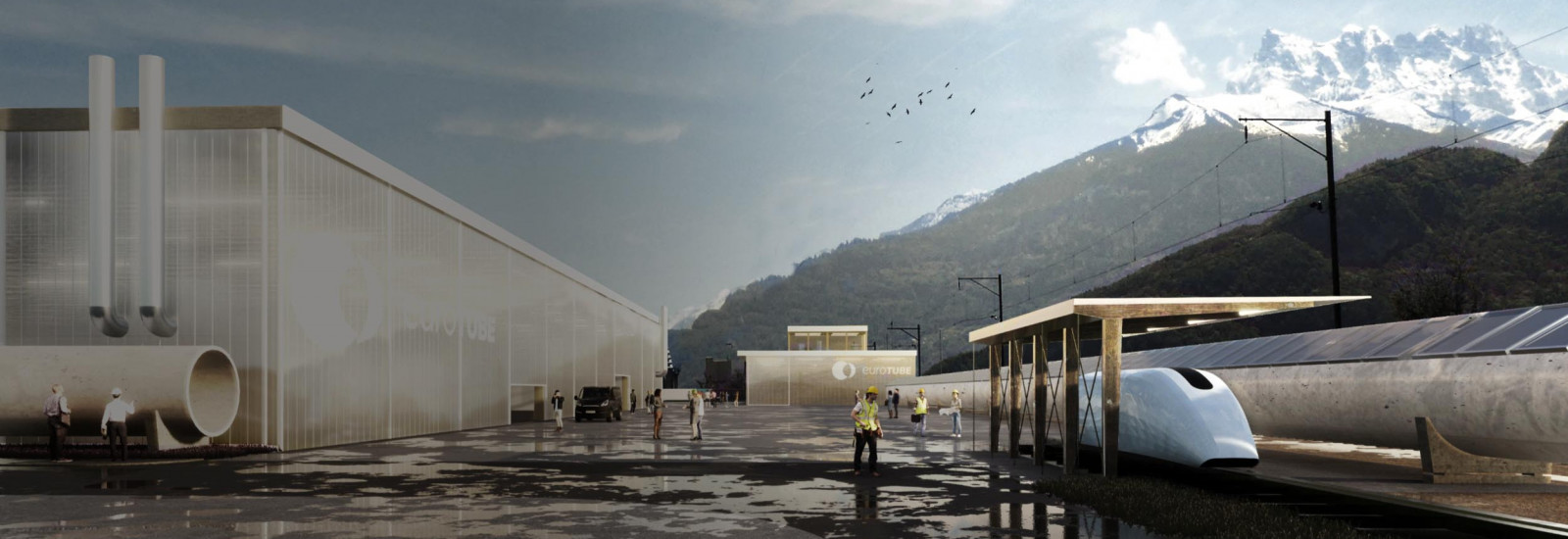“Extraordinary challenges demand new ideas – and the Hyperloop project is a vast and daring undertaking,” explains Christof Bachmann, VAT Head of Engineering Advanced Design. “The VAT team has delivered a first set of technical solutions and prototype concepts of large vacuum valves that will be tested under operating conditions.”
The Hyperloop concept, essentially a vacuum tube to propel passengers at airline speeds – at a fraction of the cost of air travel – would consist of passenger pods traveling at high speeds through low-pressure tubes elevated above ground. The passenger pods use magnetic levitation to glide through the low-pressure tube at average speeds of 600 mph (970 km/h), with top speeds of 760 mph (1,225 km/h), thanks to the reduced aerodynamic drag within the tube.
“The main challenge of a Hyperloop system is the enormous vacuum volume – not just generating an environment with low air resistance, but also safely maintaining the vacuum,” adds Christof Bachmann. “To generate and maintain the vacuum in the tubes, while minimizing the necessary energy needed, it is important not only to prevent air inrush at the stations when passengers leave and enter the passenger pods, but also to prevent leakage over the entire length of the Hyperloop tube. While minor leakage could be compensated by vacuum pumps, any larger air inrush would immediately stop movement in the tube or, at the very least, slow it down tremendously. Therefore, plans call for sector valves, as large as the tube, to be installed every few kilometers to separate the tube into sections. In case of a major leakage, only the affected sections need to be isolated as only the vacuum of that section would be lost. Traffic in other parts of the tube system could be maintained.”
In order to demonstrate the technical feasibility of various aspects of the Hyperloop concept, there are numerous teams – in the USA and Europe – developing working prototype systems. VAT is currently collaborating with the European EuroTube Foundation and other teams to develop the sector valves. The EuroTube Foundation provides research and technology testing infrastructure to universities and industry at central locations in Europe to accelerate the development of sustainable vacuum transportation technologies.
At the EuroTube facility in Collombey-Muraz, Switzerland, the Foundation is currently planning a 3 km (<2-mile) test track that will allow research teams to test their vacuum transportation models. EuroTube has invited the VAT team to test the large valve concepts at the on-site lab (at 1:2 scale) under real life conditions.

“During the design phase of the valve concepts, the focus was on the best possible integration into the Hyperloop tube design,” points out Christian Schmidt, VAT Sector Manager for Industrial Applications. “The VAT solution does not require any movable parts in the complex magnetic levitation and propulsion systems to close the vacuum valves. This ensures optimal safety and reduces complexity, cost and needed space, which is highly appreciated by the Hyperloop engineers.”
The dimensions of the sector valves required for the Hyperloop are huge, as are the forces exerted on the gate valve. Assuming a 5m (16-feet) tube width and a differential pressure of 1 bar (vacuum vs. atmospheric), the force pressing on the valve is almost 200 tons – or the equivalent of 33 African elephants standing on the gate!
"In addition to the important large sector valves, a whole range of other valves are also needed to operate a viable Hyperloop system," sums up Christof Bachmann. "Venting valves and pump isolation valves also play a key role. With the current developments and test concepts, we are one step closer to a Hyperloop vacuum valve portfolio – that offers the vacuum valve technologies required to operate a Hyperloop system."
An initial demonstration of the vacuum tube transportation concept (DemoTube) by the EuroTube Foundation is scheduled for early 2022 in Zurich, Switzerland.
